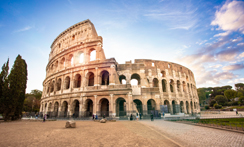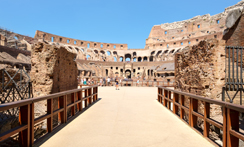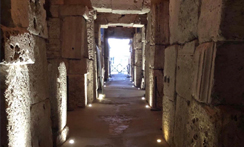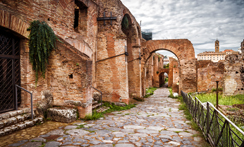Overview
The Palatine Hill is one of the most important of the Seven Hills of Rome – This is where it all started! According to legend, the twins Romulus and Remus were found here and suckled by a she-wolf in a cave called the Lupercal. This foundation myth of Rome tells us this was also the hill chosen by Romulus for his new city. After slaying Remus (who had chosen the Aventine hill), he set up a boundary and founded the city of Rome (753 BC). The Palatine is 40 meters above the Roman Forum, and overlooks the ancient ruins of the Forum on the northern side and the Circus Maximus on the southern.
The Palatine is included in the ticket for the colosseum and forum but is often missed in the height of summer because of the incline and the heat. You shouldn’t miss out on this beautiful area though; it is shaded by pine trees – a green haven that is surprisingly peaceful and offers stunning panoramic views of Rome.
Highlights
Farnese Gardens – Built in the 1550s, this was a garden pavilion (with a sunken cave fountain) which had gardens, vineyards and aviaries.
Viewing platform overlooking the Roman Forum – Gives a birds-eye view of the whole forum!
Viewing platform overlooking the Circus Maximus – Look down onto a long field in a valley (once the largest chariot racing stadium ever that could seat 250,000 spectators.
Domitian’s sunken garden – called the hippodrome or stadium, probably a huge internal garden which was surrounded by a covered two storey portico with fountains at the far end.
Domitian’s winter dining room (behind the museum) – notice the collapsed marble floor, this was a dining room which once had under-floor heating!
GESCHICHTE
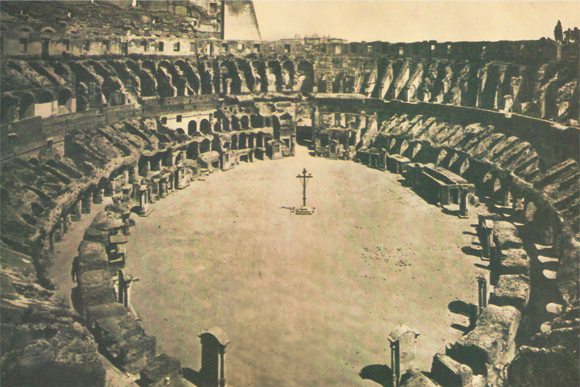
Legends aside, iron age huts have been found on the Palatine hill dating back to the 9th century BC (before the legends of Romulus). The hill has been built on over and over again so what we see today is a mishmash of various ages. The striking brick vaults which can be seen from the Roman Forum and from across the circus maximus are actually substructures to hold up the various buildings which developed over time. Historically the oldest and most important ‘patrician’ families of Rome (the aristocrats) lived on the hill, like the Beverly hills of ancient Rome. Big names like Cicero and Mark Anthony lived up there, soon to be joined by the emperors.
Augustus the first emperor also lived on the Palatine, but It was Domitian who decided to commandeer the hill from the rich and famous of the Roman elites, much like Nero, he took their land and then built an enormous palace. From this point on almost all of the emperors would live in the Imperial palace built by Domitian - changing it, rebuilding and adding extensions over time.
After Domitian, the hill was built outwards and upwards doubling in size from 63 acres to 131 acres in the 4th century. Parts of the richly decorated palace were occupied by popes after the emperors, and then the hill was abandoned.
After centuries the great Roman families returned to the Palatine, planting 16th-century pleasure gardens and pavilions over past glories. Atop Tiberius’s palace the Farnese family built two aviaries and a garden house and laid out one of Europe’s first botanical gardens—some parts of which have escaped archaeological excavation.
What to expect
The Palatine Hill is a huge site of around 2.5 km, 40metres above the Roman Forum. The closest entrance with a grand stone gate is on the road behind the arch of Constantine. Steps from here lead up the steep side of the hill directly to Domitian’s sunken garden or hippodrome. The entrance to the Roman Forum via the arch of Titus entrance is also close to the Palatine, turning left by the arch there is a hill or you can take the steps up via the Farnese gardens.
Parts or the Palatine has trees, is grassy and shaded, other parts are exposed with little shade in the summer months and can be very hot. The beauty of the park is you can wander at will, but there are few directions or explanations. Visitors with mobility difficulties will find the site challenging. There are fountains and toilets on the palatine hill.
Interesting facts
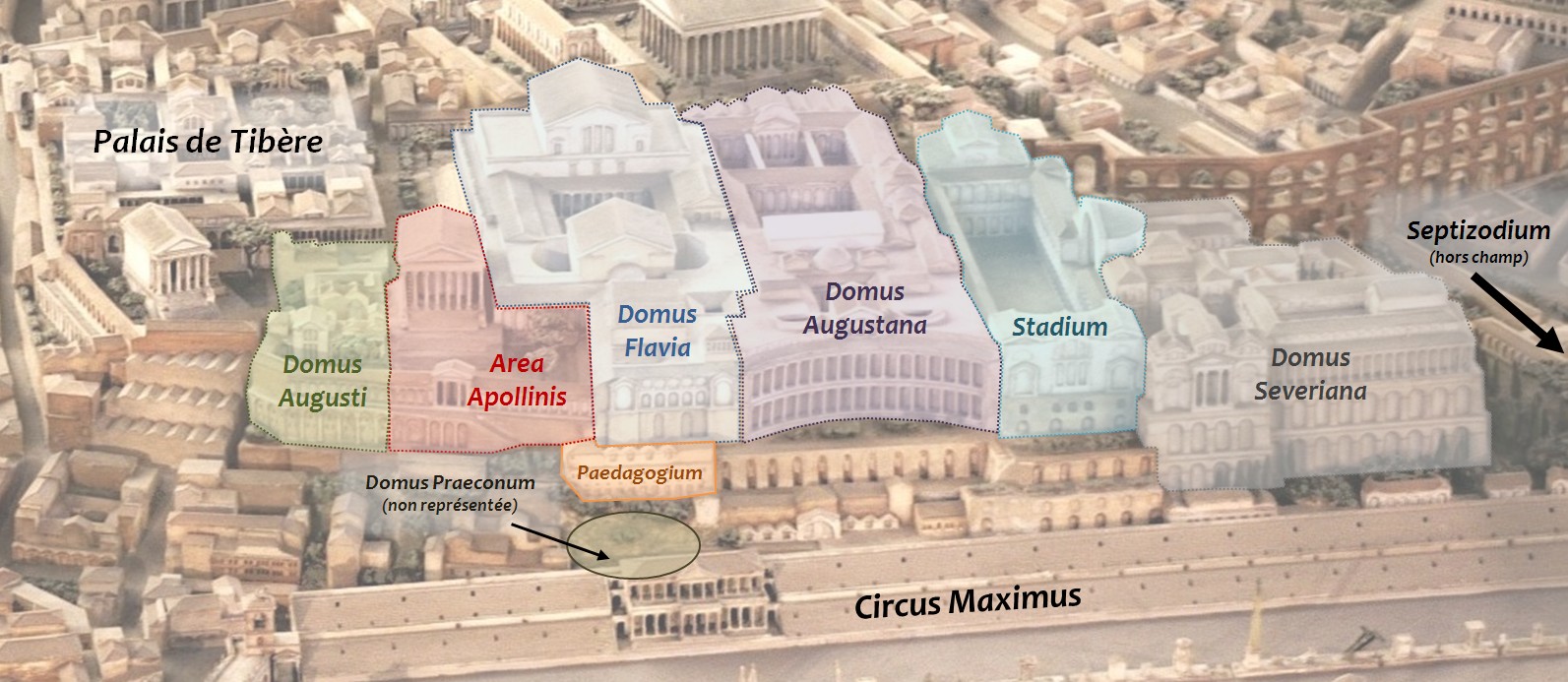
The etymology of the word palace in English (French, Italian and many other languages) comes directly from the palatine hill. It was the hill with THE imperial palace on top!
Domitian’s palace was the biggest and richest structure of all, his architect Rabirius achieved feats of constructional engineering not seen before in Rome. Parts of the lavish structure—the richly marbled, centrally heated living room can be seen today.
Archaeologists cannot prove or disprove Romulus and Remus but in 2007 a vaulted sanctuary thought to be the long-lost Lupercal was discovered 52 feet (16 metres) below the surface of the Palatine.
An extension of the Aqua Claudia Aqueduct was built by Domitian to bring water directly up to his palace for the fountains and baths – In the 1st century A.D there were huge gushing fountains on the hill.
Frequently Asked Questions
What happened to the buildings? Two levels of the palace are beneath what we can see today – the gardens you look down are were the palaces and the wall of the top level (we are walking on) have collapsed. You will see the odd scraps of marble from the pavements of this level.
Where is the marble? Like most of the Roman Forum, this was taken and recycled, much lies on church and palace floors today. Some was put into lime kilns and powdered into dust to make plaster for later generations of Roman buildings.
Who lived up here? From the early days Rome’s aristocratic families lived on the hill, towards the end of the Republic the political elite competed to build houses here. Tiberius and Gaius Gracchus, Cicero, Mark Anthony and Augustus and Livia his wife both lived on the palatine. After Augustus, the imperial houses became grand palaces and after Domitian, most of the emperors would like in his huge palatial complex.
What are the huge brick arched vaults? These re not building but are the substructures that made the hill bigger (to build more grand property). Originally, they would have had lower terraces with houses, baths, and shops. What we see today is the skeleton of a man-made hill!
